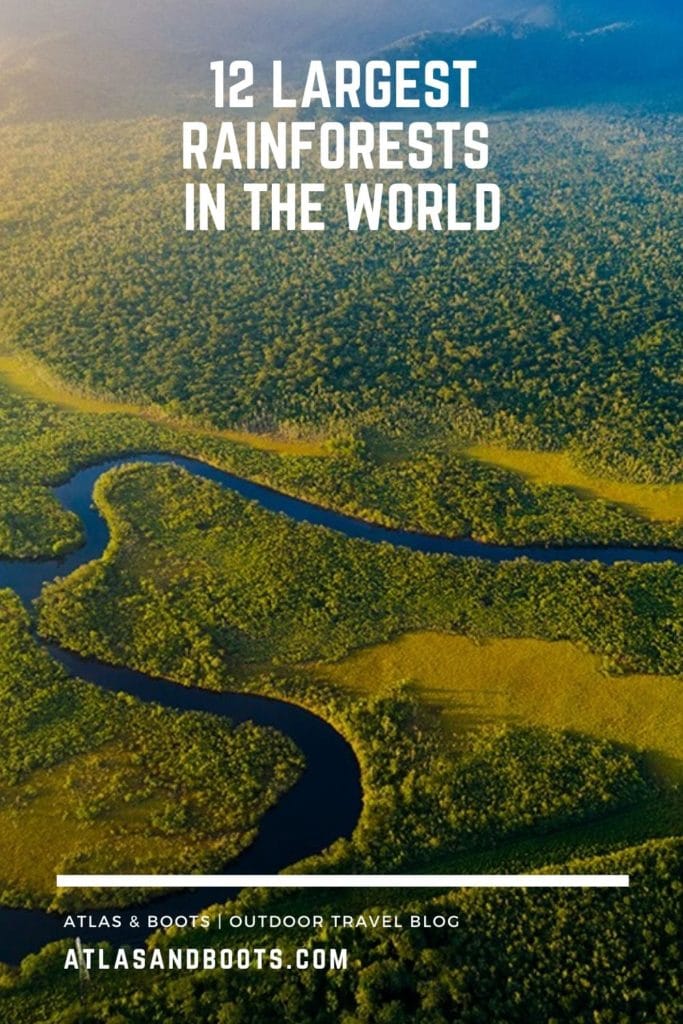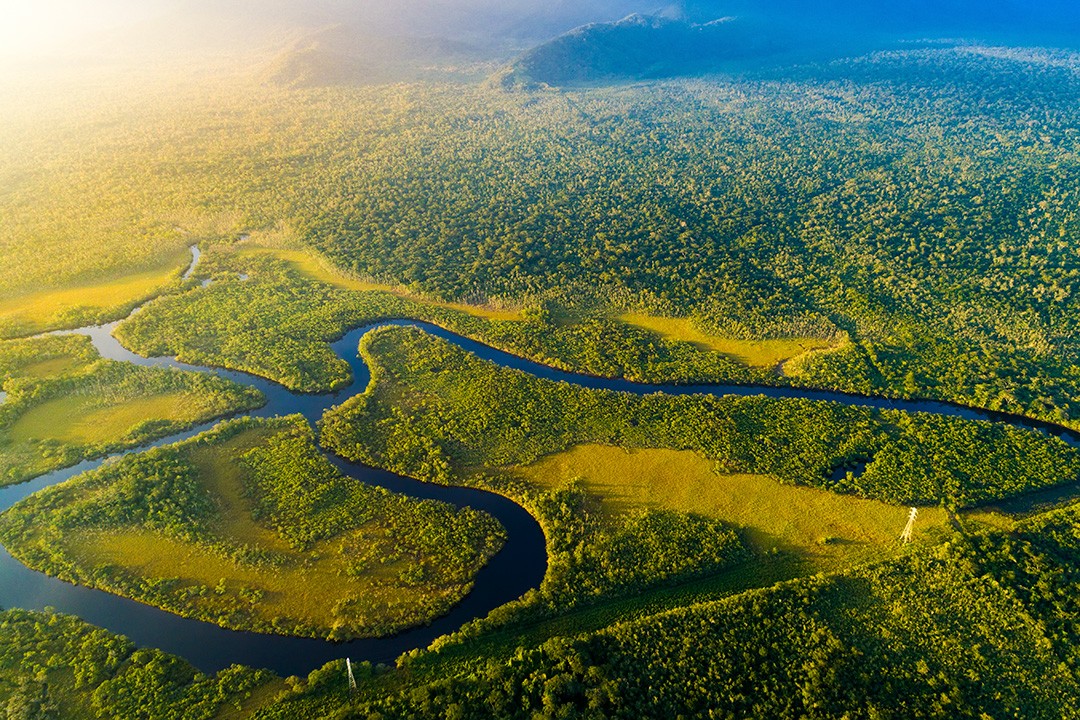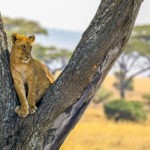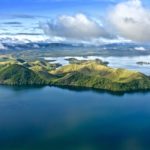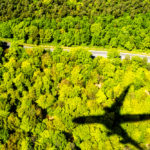The largest rainforests in the world are some of the most vital ecosystems on our planet. We look at where they’re located and why they need protecting
Home to over half the world’s plant and animal species, the largest rainforests in the world absorb vast amounts of carbon dioxide from the atmosphere, helping maintain the balance of the air we breathe while simultaneously playing a critical role in curbing global warming.
Despite their immense value, the largest rainforests in the world are under constant threat. More than half of Earth’s trees have already been lost since humans first began cutting them down.
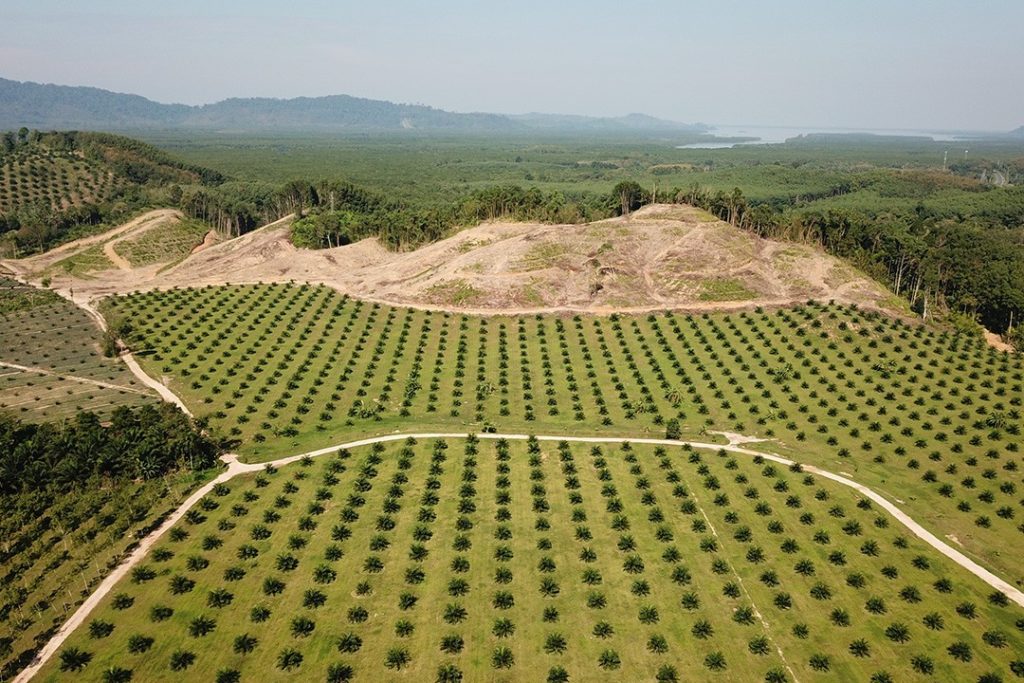
Today, deforestation takes place in the form of logging, mining, farming and rampant development. If current rates continue, rainforests will disappear altogether within a century.
Types of rainforest
The largest rainforests in the world come in two forms: tropical and temperate.
Tropical rainforests are located near the equator, between the Tropic of Cancer at 23.5° north and the Tropic of Capricorn at 23.5° south of the equator. They are evergreen, have a warm and wet climate and receive consistent rainfall – at least 2,000mm annually.
Tropical rainforests once covered 14% of the Earth’s land surface; today, it is only 6%. Despite this, about 80% of the world’s documented species can be found in tropical rainforests.
Of all tropical rainforests, 57% are found in Latin America with a third in Brazil. Other major tropical rainforests are located in southeast Asia and the Pacific islands (25%) and west Africa (18%).
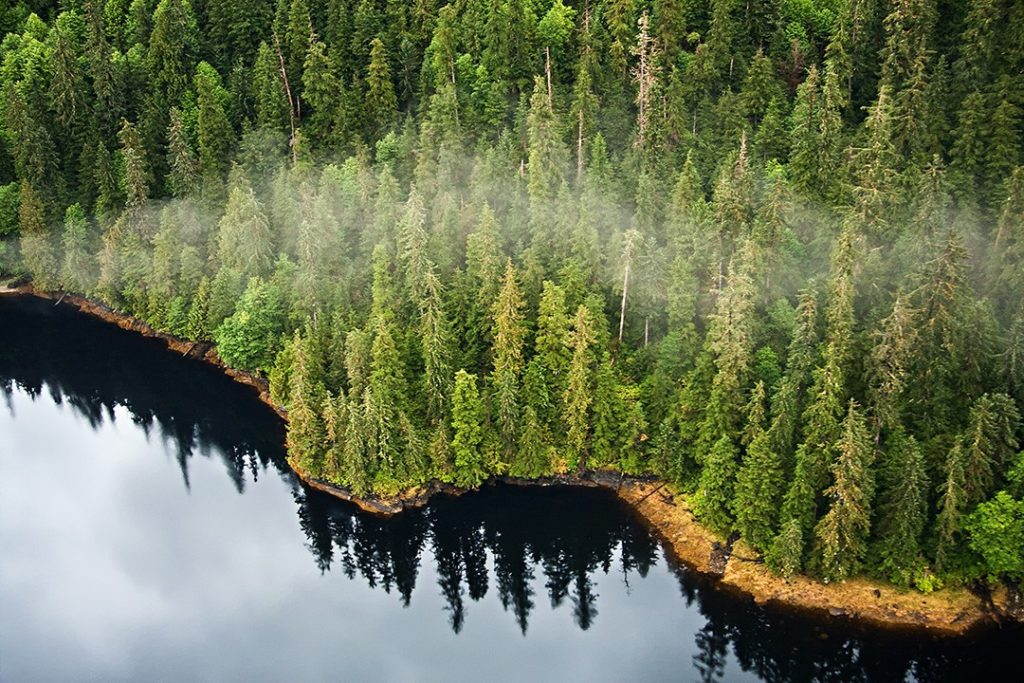
Temperate rainforests account for around 25% of the world’s forests. They are moist forests that grow on mountain ranges, usually along western coasts where westerly winds bring high precipitation.
Temperate rainforests spread much further north and south than their tropical counterparts. They still receive upwards of 2,000mm of year-round rainfall, but experience drier summers. They have less biodiversity than tropical rainforests.
The largest rainforests in the world
It’s practically impossible to say exactly how many rainforests there are in the world as definitions, boundaries and borders are interpreted differently depending on the country and organisation.
We can, however, identify and list the world’s largest rainforests by their size, type and location.
1. Amazon Rainforest
Size: 5,500,000km2
Type: Tropical
Location: Brazil, Peru, Colombia, Venezuela, Ecuador, Bolivia, Guyana, Suriname, French Guiana
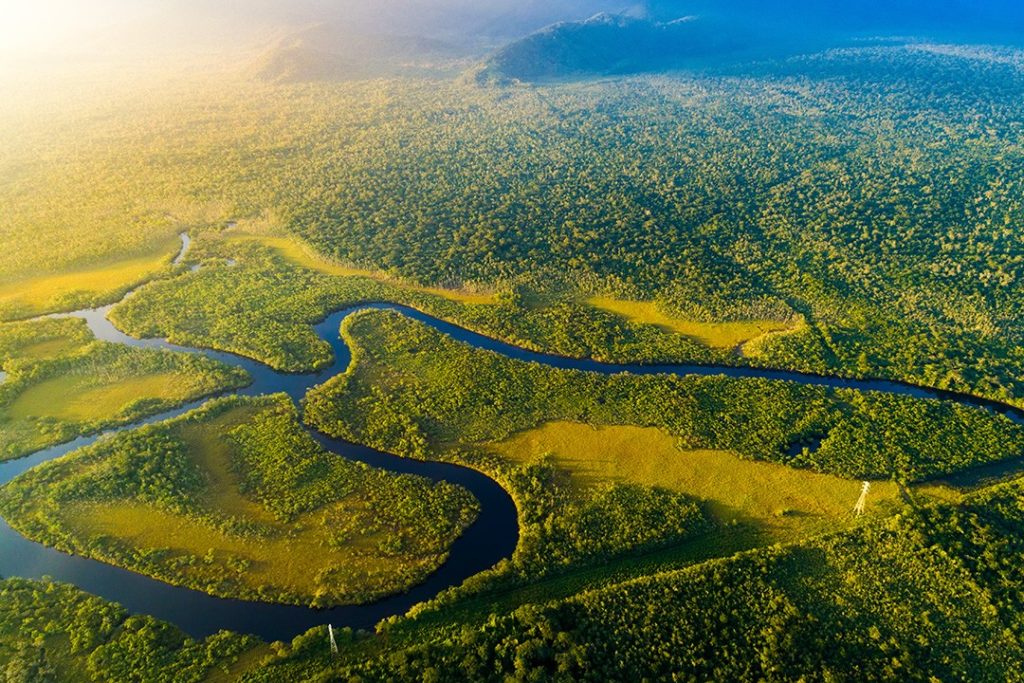
The world’s largest jungle, the Amazon scarcely needs an introduction. It is the world’s largest rainforest and spans nine countries in total, covering 40% of South America.
The Amazon represents over half of the planet’s remaining rainforests and is home to an estimated 390 billion individual trees divided into 16,000 species. In fact, the Amazon is home to a tenth of all known species on Earth.
However, this vast wilderness is under relentless threat from large-scale farming and ranching, development, logging, mining and climate change. With the majority (60%) of the Amazon within Brazil, the country shoulders huge responsibility.
Between 2000 and 2012, the rate of deforestation in Brazil slowed by 75%. However, data from 2017-2018 suggest there has been a 13.7% increase on the previous year with the biggest area of forest cleared since 2008. The fear is that this could continue if the policies of current Brazilian president, Jair Bolsonaro, see fruition.
2. Congolese Rainforest
Size: 1,780,000km2
Type: Tropical
Location: Cameroon, Gabon, Republic of the Congo, Democratic Republic of the Congo, Central African Republic, Equatorial Guinea
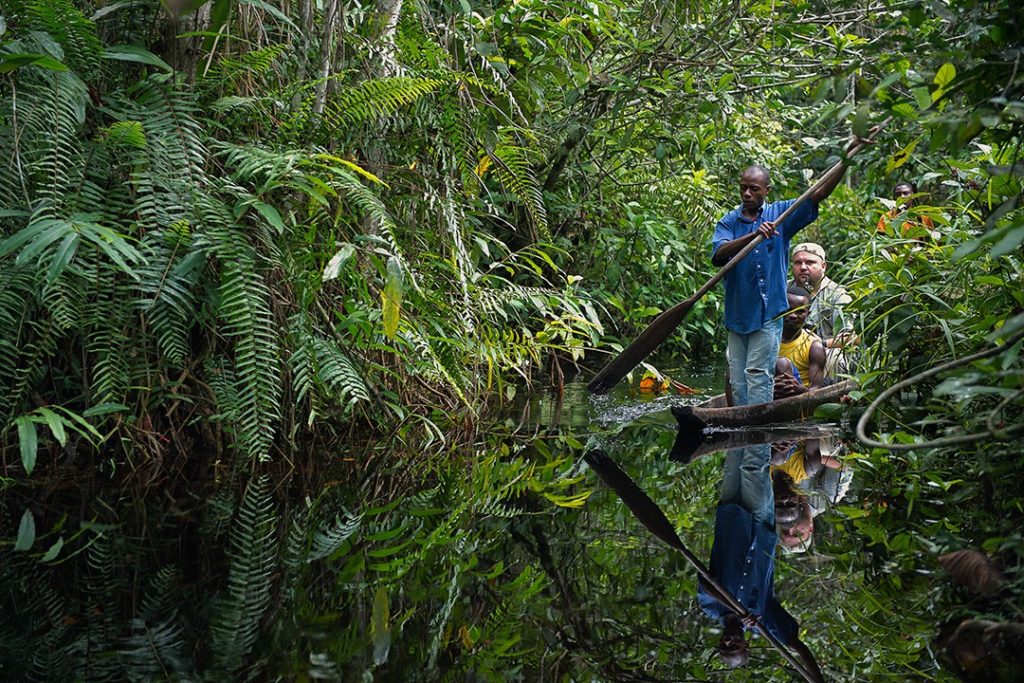
Spanning six countries across much of the Congo Basin, the Congolese Rainforest is the second biggest rainforest in the world. A medley of rivers, forests, savannah, swamp and flooded woodland, the basin teems with life: gorillas, elephants and buffaloes all call the region home.
Central Africa’s deforestation rate since 1990 has been the lowest of any major forest region in the world. Deforestation in the Congo over the past 20 years has often been from small-scale subsistence agriculture, clearing for charcoal and fuelwood, urban expansion and mining.
All of this has indirect knock-on effects with logging roads opening up areas of the Congo to commercial poaching, leading to a 62% drop in the region’s forest elephant population in less than a decade.
3. New Guinea Rainforest
Size: 288,000km2
Type: Tropical
Location: Indonesia, Papua New Guinea
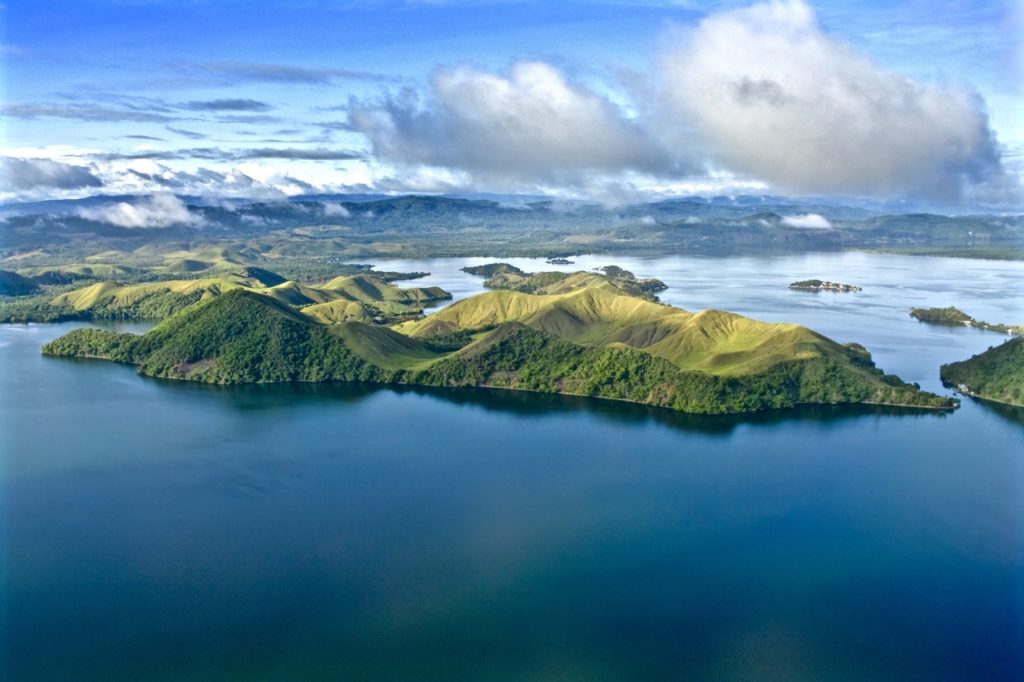
The rainforests of New Guinea cover around 65% of the land area of the second largest island in the world. The island is home to the largest rainforest in the Asia-Pacific region and the third largest rainforest in the world.
There are few places on Earth that rival the diversity of the New Guinea Rainforest. From dense tropical rainforest to coastal mangroves, the island is home to some of the world’s most unique plants and animals. More orchid species are found here than any other place on Earth.
New Guinea’s remote location has not protected it from the usual threats. The rainforests face growing incursions from logging, mining, wildlife trade and agricultural plantations – particularly oil palm.
4. Valdivian Temperate Rainforest
Size: 248,100km2
Type: Temperate
Location: Chile, Argentina
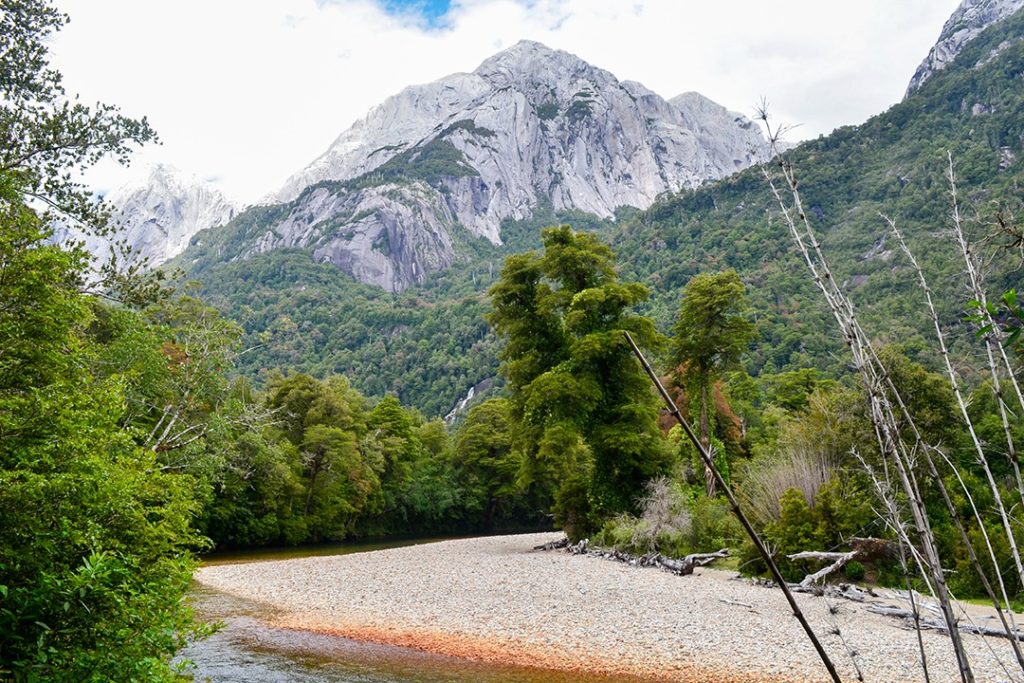
Known as the rainforest at the end of the world, the world’s southernmost jungle of this kind, Selva Valdiviana (Valdivian Temperate Forest) is located on the west coast of southern South America.
The forest covers a narrow strip of continental land between the western slopes of the Andes mountain range and the Pacific Ocean. It is the largest temperate rainforest in the world and is characterised by dense collections of ferns, bamboos and evergreen angiosperm trees that dominate the landscape.
Threats to the Valdivian include extensive logging and the replacement of the indigenous trees by faster-growing pines and eucalyptus, which are more desirable in the pulp and paper industries.
5. Heart of Borneo
Size: 220,000km2
Type: Tropical
Location: Indonesia, Malaysia, Brunei
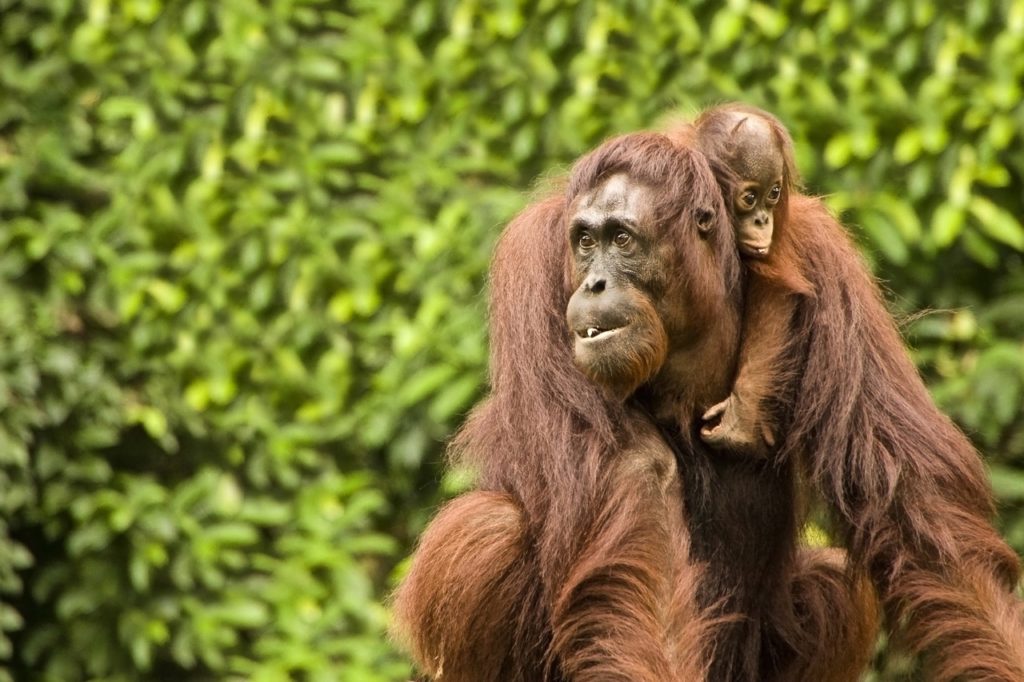
The rainforest on the island of Borneo – the third largest island in the world – is estimated to be around 140 million years old, making it one of the oldest rainforests in the world.
Known as Asia’s last great rainforest, it is a mix of lowland and montane rainforest located above 1,000m (3,300ft). The Borneo lowland rainforest in particular is diminishing due to logging, hunting and conversion to commercial land use – so much so that in 2007 the Heart of Borneo Initiative was launched by the WWF to save one of the largest rainforests in the world. The agreement, signed by the governments of Brunei, Indonesia and Malaysia, intends to protect a vast tract of rainforest on the island.
Like many tropical areas around the world, Borneo’s rainforests are deforested for timber, palm oil, pulp, rubber and minerals. As such, Borneo has lost 30% of its forest in the past 40 years, falling at twice the rate as the rest of the world’s rainforests. Large mammals such as orangutans and elephants are particularly at risk.
6. Pacific Temperate Rainforest
Size: 60,346km2
Type: Temperate
Location: Canada, USA
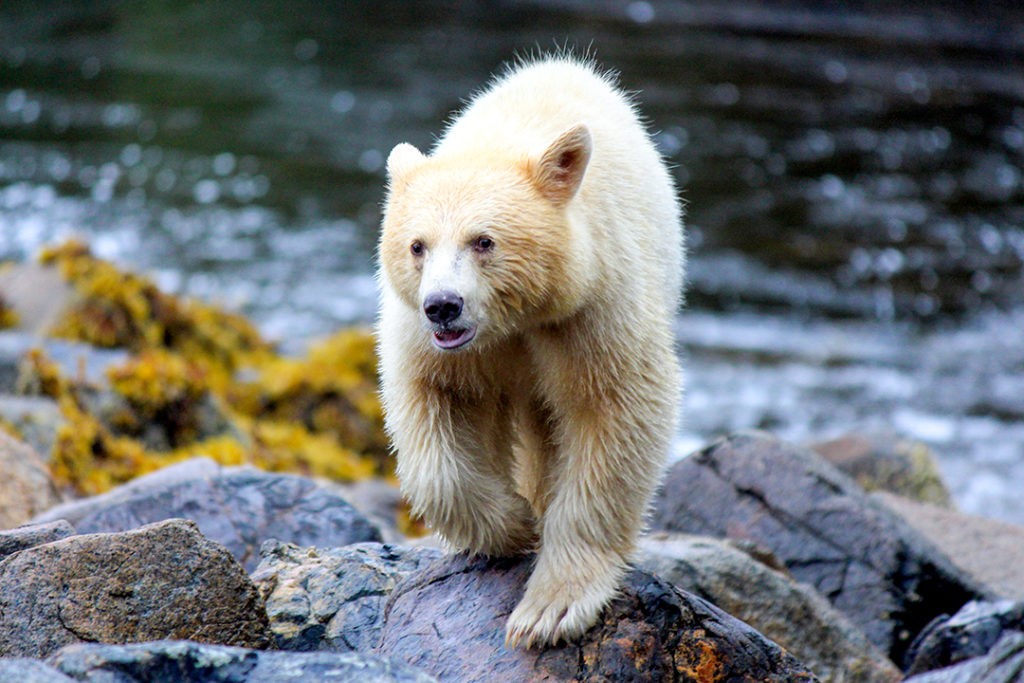
Stretching over 4,000km in a narrow coastal corridor from the edge of Prince William Sound in Alaska, along coastal British Columbia in Canada, through the northwestern US states of Oregon and Washington to northern California, the Pacific Coastal Temperate Rainforest represents the world’s largest area of coastal temperate rainforest. Despite its great length, the forest is only 150km wide at its broadest.
The rainforest incorporates the Tongass National Forest in Southeast Alaska, the USA’s largest national forest, as well as Canada’s Great Bear Rainforest in British Columbia, which is home to the spirit bear, the rare white variant of the black bear.
In Tongass, logging is a genuine danger. The current US administration is trying to increase logging and road building in America’s premier temperate rainforest.
7. Tropical Rainforest Heritage of Sumatra
Size: 25,000 km2
Type: Tropical
Location: Indonesia
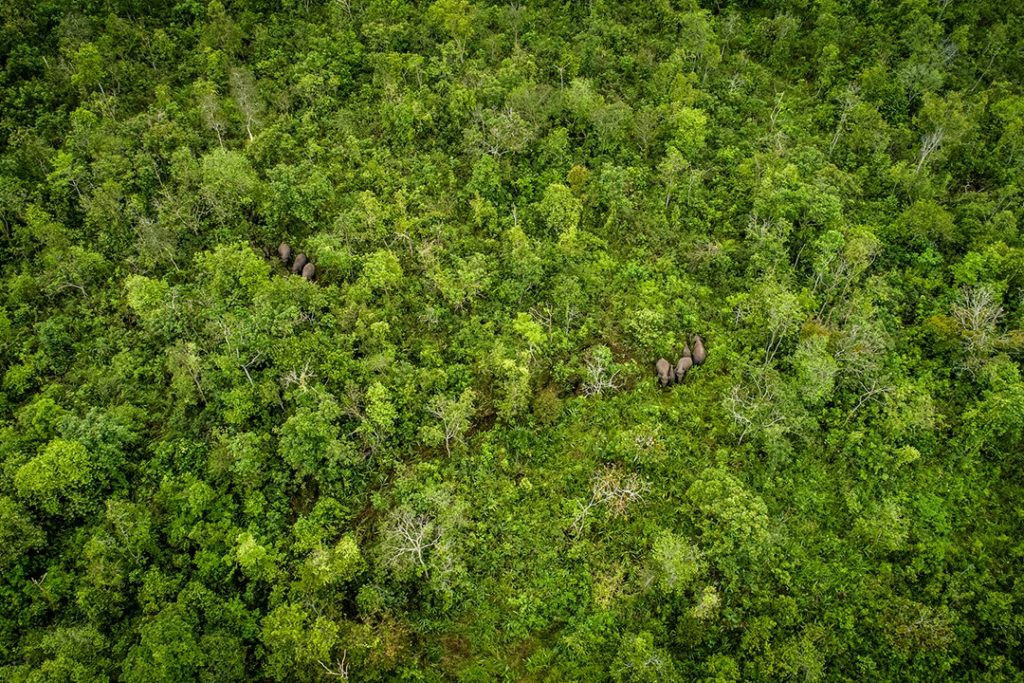
The Sumatran rainforest is a deeply tragic story of deforestation. The sixth largest island in the world was once covered with thick jungle from coast to coast. Now, only pockets of rainforest remain, largely within the UNESCO protected Tropical Rainforest Heritage of Sumatra. Illegal logging and palm oil production is chiefly to blame.
With almost 50% of Sumatra’s tropical rainforest lost in the last 35 years, the likelihood is that outside these protected areas all remaining rainforest in Sumatra will disappear within 20 years. Tigers, rhinos, orangutans and elephants are all severely at risk.
The Tropical Rainforest Heritage of Sumatra is spread across the national parks of Gunung Leuser, Kerinci Seblat and Bukit Barisan. Between them, they hold the island’s last hope for the long-term conservation of its varied plant life and myriad endangered species.
8. Eastern Australian Temperate Forests
Size: 222,100 km2
Type: Temperate
Location: Australia
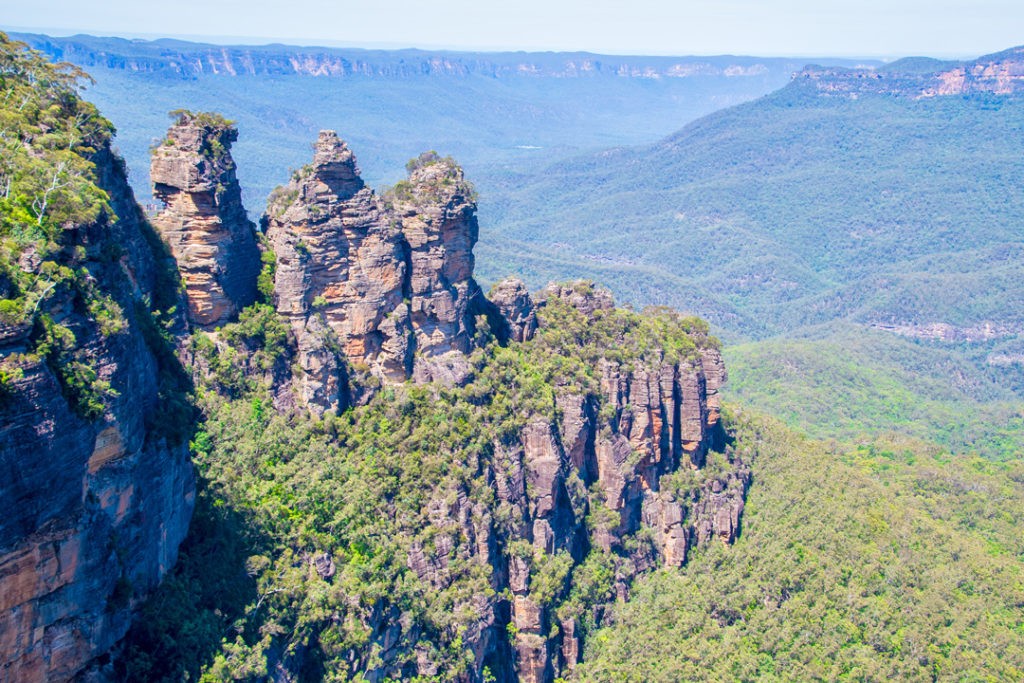
Stretching from central coastal New South Wales up into southeast Queensland, the Eastern Australian Temperate Forests eco-region incorporates a wide variety of natural environments, microclimates and rich vegetation.
However, clearing for land and urban development since the arrival of Europeans has encroached on much of the landscape and continues today. Additionally, invasive weeds attack the native vegetation.
One of the most well known areas of the rainforest is the UNESCO World Heritage-listed Blue Mountains National Park. The region features a dramatic plateau of sandstone cliffs, deep gorges, eucalyptus forests and a profusion of rare and threatened plant and animal species.
9. Bosawás Biosphere Reserve
Size: 20,000km²
Type: Tropical
Location: Nicaragua
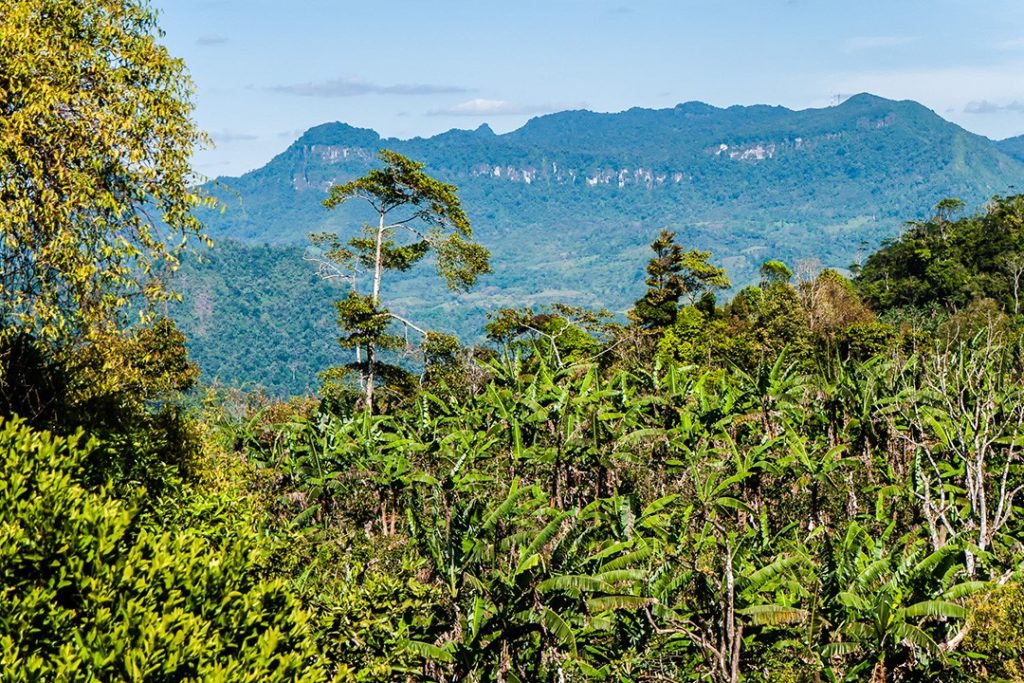
Comprising around 5% of Nicaragua’s total land area, making it the second largest rainforest in the western hemisphere (after the Amazon), the Bosawás Biosphere Reserve has been a UNESCO biosphere reserve since 1997.
The main threat to the rainforest comes from Nicaragua’s booming livestock industry. Ranchers have migrated to the reserve en masse where they often pay land traffickers to illegally secure title to land.
10. Westland Temperate Rainforests
Size: 11,880km2
Type: Temperate
Location: New Zealand
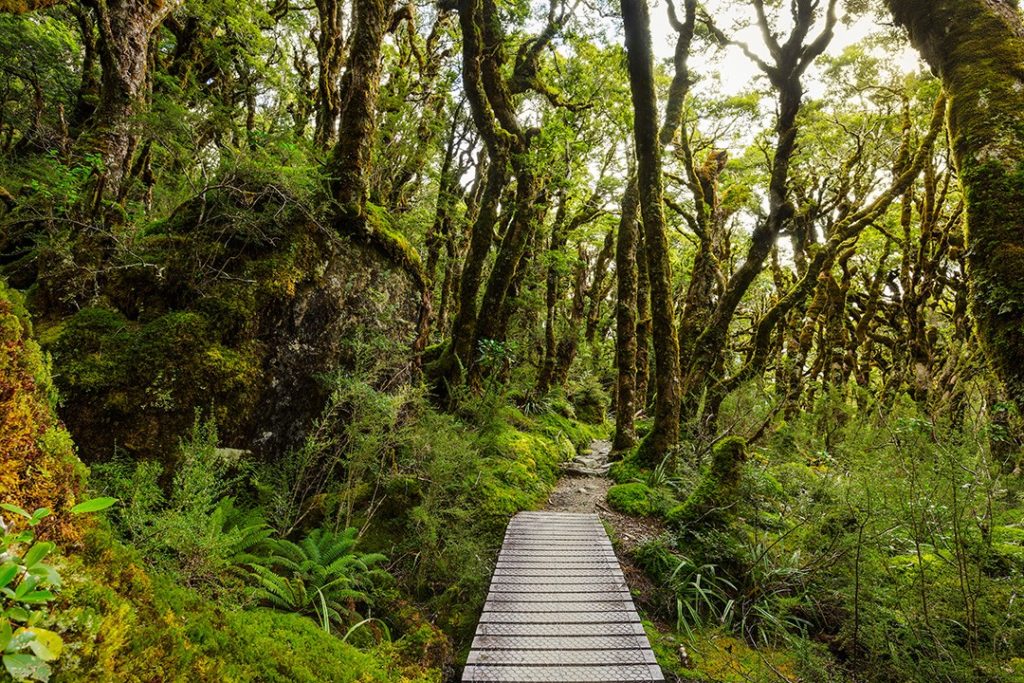
New Zealand’s Westland Temperate Rainforests are located along the central west coast of the country’s South Island. It is known as Te Waipounamou in Māori and nicknamed locally as the ‘wet coat’.
The narrow strip of rainforest runs between the Southern Alps and the Tasman Sea and includes the Franz Josef and Fox glaciers – one of the few places in the world where glaciers and rainforest meet.
The region is home to at least 28 species of threatened birds including the endemic Okarito brown kiwi. Much of the region is protected either by national parks or reserves making it one of the least-threatened rainforests in the world.
Threats do still exist though in the form of introduced mammal species such as stoats and rats. Additionally, substantial portions of the rainforest have been developed for pastureland and pine plantations.
11. Hainan Rainforest
Size: 1,500km²
Type: Tropical
Location: China
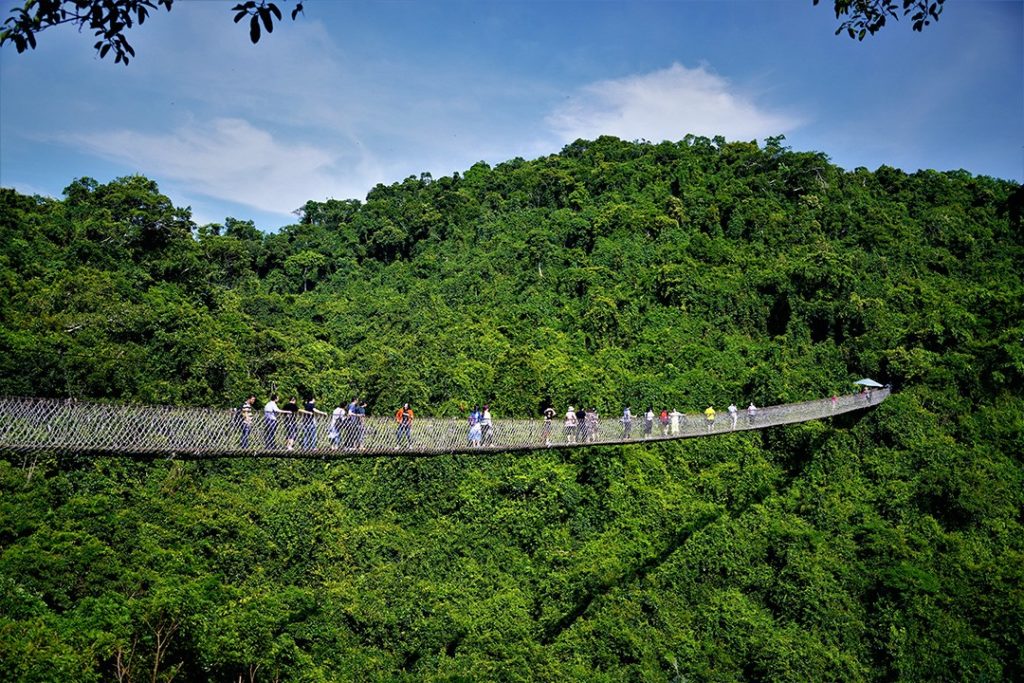
China’s tropical rainforests were once huge. Today, however, most of China’s influence on forests exists solely on the consumption side. At home and away, China are world leaders in illegal logging operations.
China’s tropical rainforests have declined by at least 67% in the last 30 years. Abroad, Chinese firms have actively cleared huge areas of rainforests as well as sponsoring large agriculture, infrastructure and oil and mining development projects throughout the world’s rainforests.
Some good news is that Hainan Island, the country’s smallest and southernmost province, is home to the largest and best-preserved tropical rainforest in China. Much of the area is now protected and is seldom visited, even though 25 million tourists visit the island each year.
12. Daintree Rainforest
Size: 1,200km²
Type: Tropical
Location: Australia
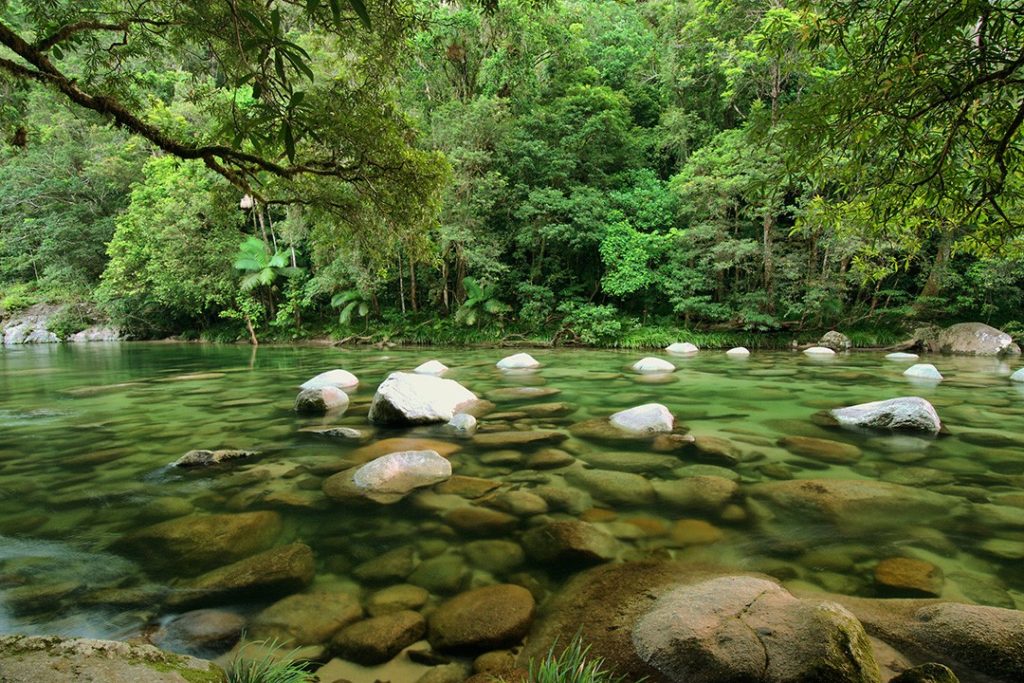
Last on our list of the largest rainforests in the world is the Daintree Rainforest, located on the north-east coast of Queensland. The Daintree Rainforest is part of the world’s oldest continually surviving tropical rainforest. It is thought to be 6-10 times older than those found in the protected areas of the Amazon – having stood for 150 million years.
The ecosystems of the Daintree Rainforest are some of the most complex on Earth. Its plant diversity and structural complexity is unrivalled on the arid Australian continent.
Unfortunately, the UNESCO protected area does not extend to all of the Daintree with residential development, climate change and invasive plants and species all a threat.
Enjoyed this post? pin it for later…
